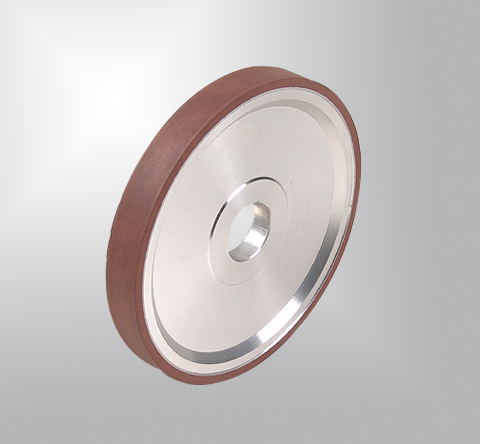

In recent years, along with the rapid development of high speed grinding and super precision grinding technology, higher requirements are put forward for grinding wheel, ceramic and resin bond grinding wheel cannot meet the needs of production, metal bond grinding wheel because of its high bonding strength and good formability, long life and other significant features and has been widely used in the production. There are two types of metal bonded diamond grinding wheel: sintering and electroplating.
Sintered diamond grinding wheel Sintered metal bonding agent Grinding wheel with bronze and other metals as bonding agent, made by high temperature sintering method, its high bonding strength, good molding, high temperature resistance, good thermal conductivity and wear resistance, long service life, can withstand a large load. Due to the inevitable shrinkage and deformation of grinding wheel in sintering process, it is necessary to reshape the grinding wheel before use, but grinding wheel dressing is difficult.
In order to give full play to the role of diamond, it is necessary to increase the holding force of bonding agent on diamond and improve the bonding strength of grinding wheel. Monolayer high temperature brazing superhard abrasive grinding wheel can overcome the shortcomings of electroplating grinding wheel, and can realize the chemical metallurgical bonding between diamond, binder and metal matrix. With high bonding strength, grinding particles can be firmly held in high speed grinding with large load only by keeping the thickness of bonding layer at 20% ~ 30% of the height of grinding particles. The bare grain height of brazing grinding wheel can reach 70% ~ 80%, thus increasing the chip tolerance space, grinding wheel is not easy to clog, and the utilization of abrasive is more full. The grinding force, power loss and grinding temperature of single-layer high-temperature brazing superabrasive grinding wheel are lower than that of electroplating grinding wheel under the same processing conditions, which means that higher working speed can be achieved, which has special significance in the high speed grinding of 300 ~ 500m/s.
At present, the main problems are as follows: first, what kind of solder and brazing process can be used to produce chemical metallurgical bonding with high bonding strength on diamond bonding interface; The control of the appropriate thickness and uniformity of the binder layer; Three is the reasonable and orderly arrangement of abrasive. For improve the diamond and solder bonding strength, the key is in the process of brazing diamond, solder, can produce metal matrix between chemical metallurgy, therefore should contain strong carbide forming elements in the alloy solder, (e.g., Ti, Cr, V, etc.), and get under the low temperature brazing, minimize the damage of the diamond.
Before brazing, the surface of metal substrate should be treated with oxidation film, and the diamond and solder should be degreased and decontaminated. The melting point of the filler metal can be reduced and the fluidity and wettability of the filler metal can be improved by adding proper amount of B and Si with strong carbide forming elements in the filler metal. Brazing with powder filler metal under vacuum condition (or inert gas protection). The ordered distribution of the abrasives and the consistency of the solder distribution thickness before brazing are also very important to improve the uniformity of the binder thickness after brazing. The rational and orderly arrangement of abrasives on grinding wheel working surface has always been the goal pursued by abrasive industry, and it is expected to be realized in single-layer superabrasive grinding wheel.
In the process of developing brazing grinding wheel, the topography of grinding wheel is optimized according to the requirements of processing conditions, and the grinding performance of the developed brazing grinding wheel can reach a higher level if the abrasive is arranged according to the optimization results. On the template, regular holes with an aperture equal to the diamond abrasive grain diameter and a depth of 70% of the diamond height are processed. The diamond is arranged according to the holes, and the thickness of the alloy filler metal after melting is about 30% of the diamond height. The brazing process using hole template can not only ensure the orderly arrangement of abrasive grains (good isoheight), but also ensure 70% exposure height of diamond. However, its application in industrial production needs further study.Superhard abrasive wheel made of diamond or cubic boron nitride (CBN) abrasive has been widely used in various aspects of grinding field because of its excellent grinding performance. Diamond grinding wheel is a tool for grinding hard alloy, glass, ceramics, gems and other high hardness and brittle materials.